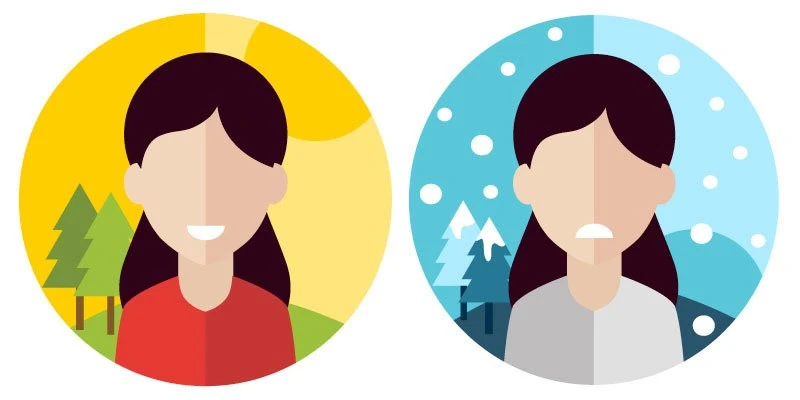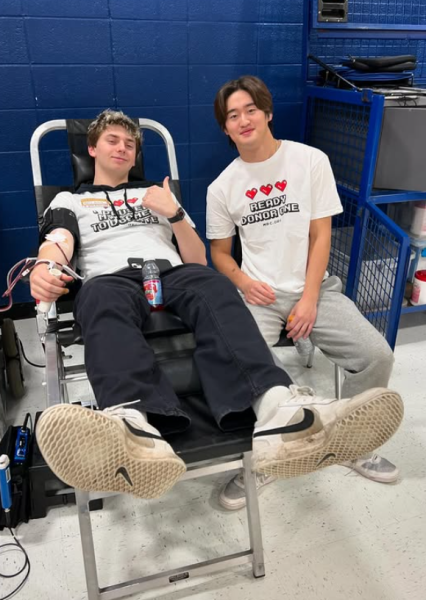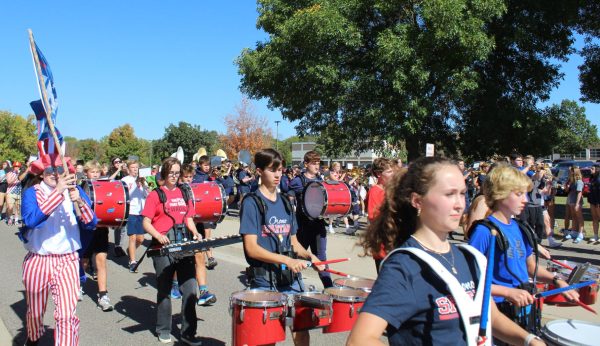Seasonal Affective Disorder is affecting students and staff at Orono High School
SAD affects OHS students because of the seasonal change in Minnesota.
Point Statement: To inform Orono High School students and staff about seasonal affective disorder, so they know the problem and how to help recover from it.
As winter approaches, students and staff may be feeling a change in their mood. Seasonal Affective Disorder (SAD) is a cyclic illness people often feel around the fall and winter seasons, causing a drastic change in energy and emotions.
People who are affected by SAD generally develop symptoms similar to those found in a stage of depression. One major symptom of seasonal affective disorder is a change in one’s sleep cycle. According to a professional article on The effect of age and chronotype on seasonality, sleep problems, and mood: SAD can develop a chronotype, which changes when a person feels tired or energetic. Thus vastly changing their sleep cycle.
According to Aníbal Fonte, an author for the BMC Psychiatry journal,Seasonal Affective Disorder is seasonal, unlike other depressions in which symptoms are seen in an individual all year long. SAD often increases appetite and sleep instead of diminishing the two.
“[Seasonal affective disorder] has to do with the seasons, particularly the changes in daylight, sometimes with students and with individuals, you see their symptoms increase, as the days are getting shorter,” psychologist Ericka Ronnings said.
Students and staff may be affected by SAD and not even realize it. In Aníbal’s study, out of 324 adults tested, 41.7 percent showed significant signs of seasonal affective disorder.
If all students and staff were involved in a study replicating this one, one would likely see roughly the same result. Students and staff both should be aware of this so they can help themselves or others if they are suffering with symptoms of SAD.
“I know some people who have it so severely that they have to, in the middle of winter, go somewhere, like a sunny location, that’s prescribed by their doctor, because it affects them so much,” Orono High School journalism teacher Kyle Herring said.
“I taught for 10 years in Florida, as well, and I taught in St. Petersburg. Florida is the sunshine state and in St. Petersburg the sun shined 95 percent of the year. [Students] mood changes, the energy changes, like it definitely is more noticeable here than it was when I taught in Florida,” OHS psychology teacher Sara Ibs said.
Ibs said she saw a more noticeable change in Minnesota students because of a greater difference in season changes. In Minnesota, as we transition into winter, the sun sets closer to 4:30, rather than in Florida, where the sun sets around 5:30. This causes citizens of Minnesota to feel a greater impact of the “winter blues” and feel much better in the summer, according to The National Institute of Mental Health.
According to Thomas Wehr, a psychiatrist at the National Institute of Mental Health, one of the biggest symptoms of SAD is daytime drowsiness
“I [fall asleep] sometimes once or twice a day during school,” senior Josh Delange said.
“I think during the winter we’ll pick up a little as [right now] there’s no motivation or no sports after school, so I really have no drive towards school,” Delange said.
One of the factors that can help with SAD is physical activity and fitness, which was subconsciously noticed by Josh Delange. Students have also seen a pattern of a happier mood when they are enduring physical activity.
When asked about their change in mood as winter approaches, senior Harper Randolph said her mood gets better. This contradicts the previous results seen in students but shows how sports and physical activity can improve mood.
“Yes. 110%, because I am doing things like skiing in the winter, which I love, I’m occupied,” Randolph said.
Students can do multiple different things to reduce the effects of SAD. Such as participating in more physical activities or even buying artificial light boxes.
“I would suggest a lightbox. They are specifically designed to give you certain rays from the sun. You can get them for cheap and you could just have them sitting wherever you do your homework, or honestly wherever you sit and watch TV,” Ibs said.
“I always suggest to kids, if you’re struggling, and you’re feeling down. Getting outside is one of the best things you can do. Exercising, getting sufficient sleep, and eating well,” Ronnings said.






















































